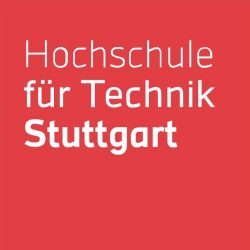It is expected of cities to provide an attractive, but also competitive place to work and live, while managing the needs of all transportation users and meeting the increasing demands of climate, environmental and health protection all at the same time. Not meeting these demands often simultaneously relates to a reduction in the inhabitants’ quality of life. An important component for a high standard of living in cities is mobility, which is one aspect of our institution’s research project, iCity, aimed at developing the intelligent city of the future (read more here about this project).

Specifically, city administrators and developers need to find traffic-reducing measures due to the ever-increasing volume of privately-owned as well as commercial vehicles, where the latter one is especially influenced by the flow of products related to online commerce. However, the acceptance of the affected citizens towards change is currently still low as it often relates to uncertainties which in turn increase resistance. Indeed, people seem to focus on the resulting limitations in mobility more easily, but have a hard time imagine the potential benefits, such as the improved quality of life. However, involving and making it easier for the affected people to experience potential changes and showcase the resulting benefits, such as through virtual reality (VR), or augmented reality (AR), even before they are actually implemented, can increase acceptance (Yoker, 2021). The research project Streetmoves4iCity focuses on evaluating different urban scenarios via participatory tools.
Research goal
Throughout his research, Tobias Reulein, a student of our business psychology department, investigated the effect of experiencing a reduction of car traffic in an urban context through VR on the acceptance towards this measure. Additionally, this study aimed at exploring the effect of using VR compared to 2D images on the acceptance.
Research overview
Research included an experiment with two independent groups (VR or 2-D images). 30 participants, mainly students, with a mean age of 25 years were part of the VR group, while 38 people (mean age: 21 years) were allocated to the 2-D group. Participants were given a questionnaire before and after receiving the information about the traffic measure, which presented a traffic trial to reduce car traffic in the German city of Mannheim. The setup of the study was similar to a prior study (part of Streetmoves4iCity) which used augmented reality (AR) to demonstrate the intended.
Main findings
- Experiencing the traffic measure, i.e. a reduction in car traffic, through VR had a positive effect on the participants’ acceptance. The acceptance differs significantly before and after the VR experience, specifically, the acceptance of the factors traffic reduction and parking space reduction increased after the experience.
- Experiencing the traffic measure though 2-D images did not have a significant effect on the participants’ acceptance.
- After the study, acceptance of respondents in the VR group was significantly higher than in the 2-D group.
- The positive effect and acceptance of VR was independent of the participants’ technology affinity.
- Ideas on how to use the newly created free space because of the traffic reduction were: more green space, plants and seating opportunities as well as fitness equipment or places for community activities or pop-up usage.
- Concerns about the presented traffic measure related to possible disadvantages arising for residents of the specified area, the need for alternative parking spaces to used instead, no suitable mobility alternatives, potentially resulting traffic jams or higher traffic volume on alternative routes.
Conclusion
This work highlighted the potential of digital participation tools, here VR, to better involve persons affected by change which ultimately aids in increasing their acceptance. More specifically, research conducted in this study confirmed that VR, compared to 2-D images, is a suitable participatory method for increasing the acceptance of sustainable mobility, especially related to traffic reduction, in urban neighborhoods. The positive effect of the VR condition was also better compared to the AR condition of the prior study Future studies, or field experiments, which offer an even more realistic experience (in VR or AR), could aid to further the positive effects found in these experiments regarding user research.
Besides, as emphasized in the first two posts of this series, VR also presents promising opportunities along the customer journey.
References
Yoker, Ü. (2021). Partizipation kann die Akzeptanz von Infrastrukturprojekten erhöhen. Energie-Experten – EKZ-Energieberatung. https://www.energie-experten.ch/de/wissen/detail/partizipation-kann-die-akzeptanz-von-infrastrukturprojekten-erhoehen.html

